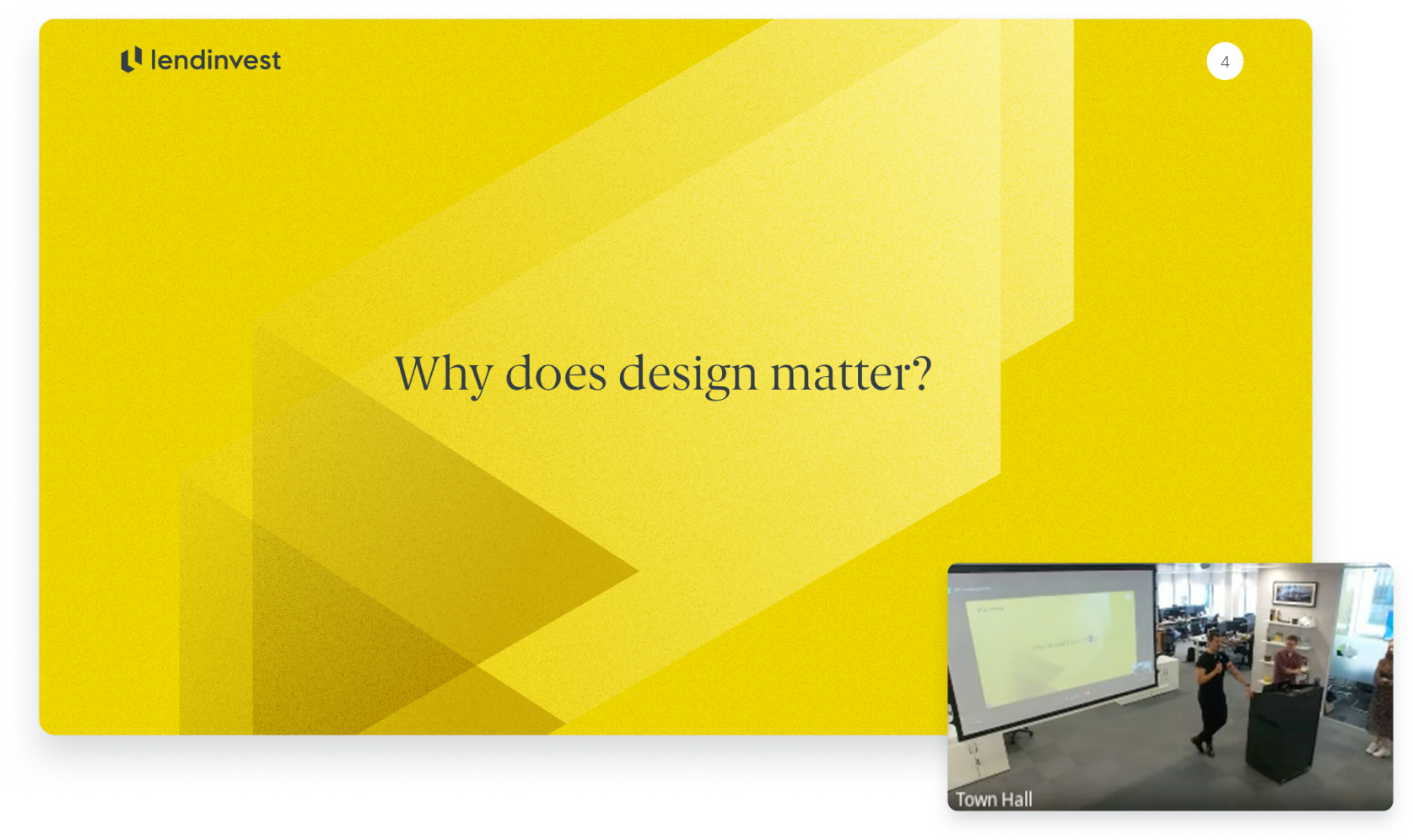You are a salesperson
And you are selling design.
Originally posted on the LendInvest tech blog
Tim Brown, Executive Chair of IDEO defines design thinking as ‘…a human-centered approach to innovation that draws from the designer’s toolkit to integrate the needs of people, the possibilities of technology, and the requirements for business success’. It is an approach to problem solving which emphasises both empathy for the end user as well as testing and compromising with what’s technically feasible to arrive at innovative solutions.
When utilised properly it’s a powerful approach to product development, but getting leadership buy-in can be a challenge.
At LendInvest, we’re at a pivot point in both our business and technology delivery cycles. As we move away from what we delicately call ‘no shit’ work (e.g., we need to build this thing immediately in order to compete in the market) we find ourselves moving more towards incorporating design thinking as part of the process. Indeed, the design team recently gave a company-wide presentation where we proudly announced that design is no longer a nice to have or a garnish at the end but table stakes from the get-go.

Ida, Cezar and myself presenting to the company and being really brave and gorgeous about it
The wider company is beginning to understand the true value behind design, too. But that hasn’t always been the case. Challenging this paradigm is an exercise in patience and proving to stakeholders that it’s time well spent. In fostering a culture of experimentation and learning — and crucially involving the right members of the leadership team in this process — we’ve found champions to support this way of working.
Here’s three ways we’ve started doing this at LendInvest:
#1: By talking about operational efficiency
Ultimately it is the leadership's job to bring maximum value to the shareholders. One of the best manageable ways to do this is increasing the operational efficiency of the company. By walking folks through the gains of things like DesignOps as well as speedy iteration and adaptation, you can quickly paint the picture that investing some time on these things now will save a whole bunch later.
An example at LendInvest is how we dedicated 6 months of build time on a growing design system for some of our broker-facing tools. While this was a huge up-front investment, it now means three crucial things for the whole tech arm of the company:
- Faster time to market for new products. We are able to iterate and ship new products in fractions of the time, because all the leg work has been done to underpin it
- Reduced development costs. The time can now be spent building better tech, instead of reinventing the wheel for every product
- Higher quality products and services. Because our work has been tested internally, we can assure a good sense of consistency across all our broker-facing tools
To effectively communicate these benefits, it's good to gather data and examples that support your arguments. Data from other organisations is always a great way of showcasing this. Performing retrospectives and gathering internal data, whether anecdotal or quantitive. Just make sure you keep it at the front of folks' minds.
#2: By being ever-present
Colleagues at LendInvest would probably say they’ve seen enough of my face recently to last a whole career. And that’s the whole point. Design is starting to make huge moves and we are championing it wherever possible.

In recent months we’ve found a little more space to start experimenting and testing ideas thoroughly, and have been getting great insights from that. Little things can often snowball into massive improvements for the product, and it’s important to know when to shout about them.
- Share the results of tests and pilot projects. Have you recently user-tested something? Interviewed some users? Found some interesting insights from your data warehouses? Find a way of crafting a narrative around how design thinking can help improve massive things just by shifting mindset. This can really help demonstrate the value of design thinking and give leadership confidence in its ability to drive results
- Foster a culture of experimentation. This one sounds harder, but it really comes down to showing team members across all levels ongoing work — including shortcomings or wrong calls — and levelling the ground to help everyone feel comfortable failing and learning. At the end of the day, everyone is capable of creative thinking
#3: By involving the right team members
Bringing the appropriate people into the design process at the right time is a great way of both exposing the process, and getting them invested in the success of the project.
At LendInvest we regularly try to involve stakeholders all the way to the c-suite. We’re fortunate that a few key members are very data-driven individuals who like to play the same games we do to get results, but taking them a level deeper to the nitty-gritty helps bridge that gap even more.
So what? What’s the impact of these things?
Thanks for asking! In short: over the last few months we’ve seen a lot more autonomy and trust thrown the design team’s way. Retrospectives from the launch of major products have shown us that while the process isn’t without its flaws, stakeholders feel more informed, involved, and ultimately happy to let design and product work on the right thing at the right time.
To summarise how we’ve done this, we’ve been careful to bring everything back to the theme of operational efficiency, by being ever-present as a pillar of the company, and involving the right people in these processes.
It’s important, though, to know when not to oversaturate. As long as everyone is getting value from the process, it’s a winner.
